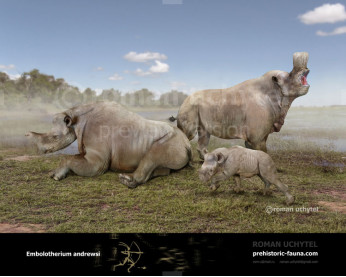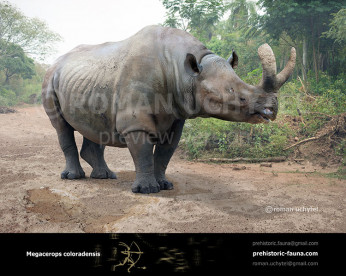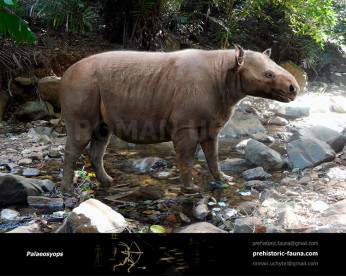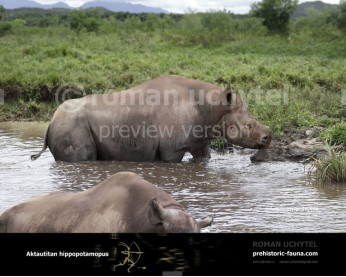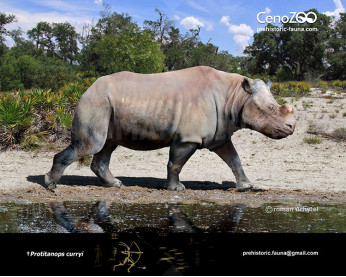Embolotherium grangeri
103103Embolotherium grangeri (†Embolotherium (Osborn, 1929))
Order:Perissodactyla
Family: †Brontotheriidae
Temporal range: during the Late Eocene in Asia (Mongolia)
Dimensions: length - 4,5 m, height - 250 сm, weight - 2000-3000 kg
Embolotherium grangeri (Embolotherium ergilense) is a representative of the brontoterieds family the perissodactyle’s order. These are large terrestrial mammals, larger than the rhino. Like all rhinos, a feature of the limbs of these animals was the reliance on the tips of the fingers, so they were digitigrade. The group was well represented in savannah landscapes of Central Asia and North America, mainly in the Oligocene. Members of the emboloteries genus, well known from Lower and Middle Oligocene’s locations in Mongolia and China. Embolotherium ergilense possibly synonymous Andrews. Found skull belonged to an old male, so that probably differ between Ergil Embolotherium and Embolotherium andrewsi - age and sex. Nasal ram, however that may be, was very wide and massive and quite lifted up. This sample differs also the location of the orbits, shorter and more concave frontal bone, a wider neck and other features. The size of the skull - 125 cm condylobasal’s length implies ergilensises growth from a large African elephant above 4 m at the shoulder and weighs about 7 tons.
Embolotherium grangeri (†Embolotherium (Osborn, 1929))
Order:Perissodactyla
Family: †Brontotheriidae
Temporal range: during the Late Eocene in Asia (Mongolia)
Dimensions: length - 4,5 m, height - 250 сm, weight - 2000-3000 kg
Embolotherium grangeri (Embolotherium ergilense) is a representative of the brontoterieds family the perissodactyle’s order. These are large terrestrial mammals, larger than the rhino. Like all rhinos, a feature of the limbs of these animals was the reliance on the tips of the fingers, so they were digitigrade. The group was well represented in savannah landscapes of Central Asia and North America, mainly in the Oligocene. Members of the emboloteries genus, well known from Lower and Middle Oligocene’s locations in Mongolia and China. Embolotherium ergilense possibly synonymous Andrews. Found skull belonged to an old male, so that probably differ between Ergil Embolotherium and Embolotherium andrewsi - age and sex. Nasal ram, however that may be, was very wide and massive and quite lifted up. This sample differs also the location of the orbits, shorter and more concave frontal bone, a wider neck and other features. The size of the skull - 125 cm condylobasal’s length implies ergilensises growth from a large African elephant above 4 m at the shoulder and weighs about 7 tons.

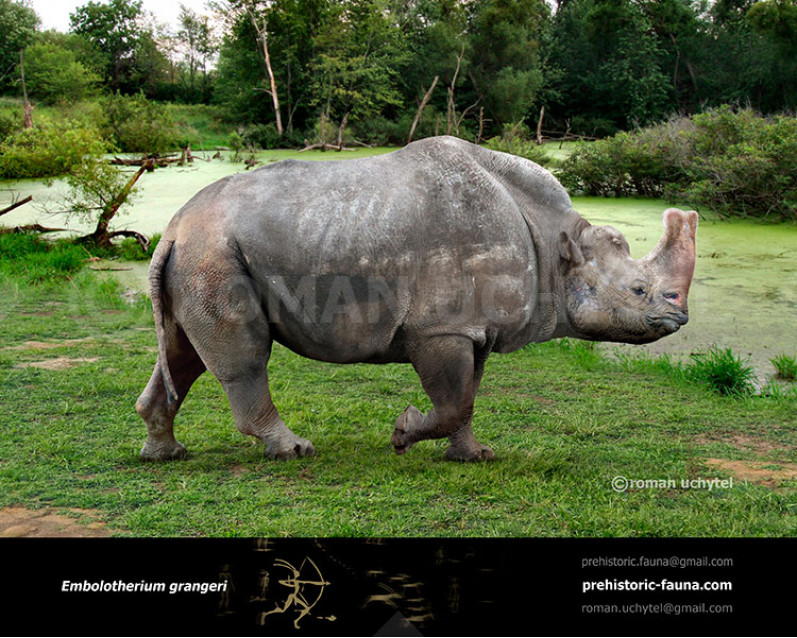
-797x638.jpg)
1-797x638.jpg)

-70x56.jpg)
1-70x56.jpg)
